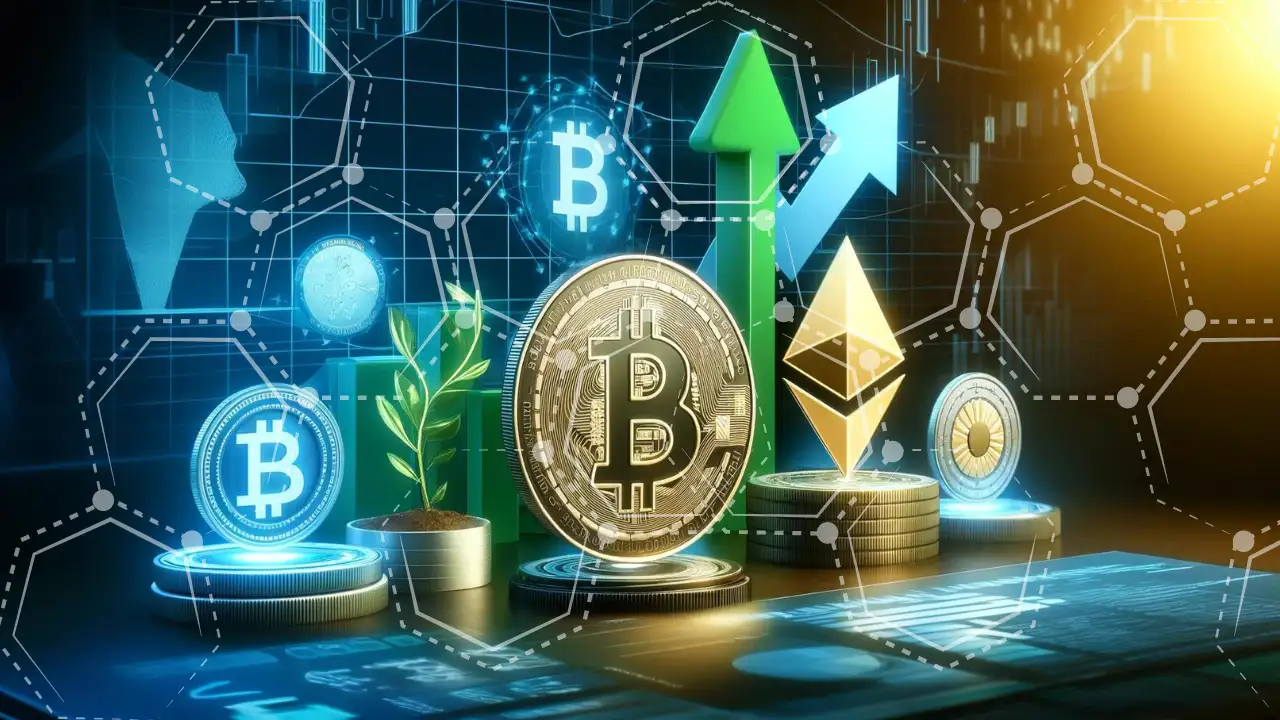The digital revolution has reached a new frontier, and metaverse investment opportunities 2025 are shaping up to be among the most lucrative ventures for forward-thinking investors. As virtual worlds continue to expand and merge with our physical reality, the investment landscape is transforming at an unprecedented pace. From virtual real estate that sells for millions to innovative blockchain technologies powering immersive experiences, the metaverse presents a wealth of opportunities that savvy investors cannot afford to ignore. Whether you’re a seasoned investor looking to diversify your portfolio or a newcomer seeking to understand this emerging market, understanding these investment opportunities has never been more critical for building long-term wealth in the digital age.
Understanding the Metaverse Investment Landscape in 2025
The metaverse has evolved significantly since its early conceptual stages, transforming into a multi-trillion-dollar ecosystem that encompasses virtual reality, augmented reality, blockchain technology, and digital assets. As we navigate through 2025, the investment opportunities within this space have matured, offering both institutional and retail investors numerous pathways to participate in this digital revolution.
The global metaverse market is projected to reach unprecedented heights, driven by technological advancements, increased user adoption, and substantial corporate investment. Major technology companies, gaming studios, and financial institutions are pouring billions into metaverse infrastructure, creating a robust foundation for sustainable growth and profitable investment opportunities.
Understanding the metaverse investment landscape requires recognizing the interconnected nature of various technologies and platforms. From blockchain-based virtual worlds to augmented reality applications, each component offers unique investment angles that cater to different risk appetites and investment strategies.
Key Market Drivers Shaping Investment Potential
Several fundamental factors are driving the exponential growth of metaverse investment opportunities. Technological infrastructure improvements, including 5G networks and cloud computing advancements, have significantly enhanced user experiences and reduced barriers to entry. These improvements directly translate into increased user engagement and higher revenue potential for metaverse platforms.
Consumer behavior shifts, particularly among younger demographics, show a strong preference for digital experiences and virtual social interactions. This demographic trend creates sustainable demand for metaverse services and products, providing investors with confidence in long-term market viability.
Corporate adoption of metaverse technologies for training, collaboration, and customer engagement represents another significant driver. As businesses recognize the efficiency and cost-saving benefits of virtual environments, enterprise-focused metaverse solutions are experiencing rapid growth and attracting substantial investment capital.
Top Metaverse Investment Opportunities 2025
Virtual Real Estate: The Digital Land Rush
Virtual real estate has emerged as one of the most talked-about investment categories within the metaverse. Digital land parcels in popular virtual worlds are selling for substantial amounts, with some premium locations commanding prices comparable to physical real estate in major metropolitan areas.Investors are purchasing virtual land for various purposes, including the development of virtual businesses, hosting events, creating advertising spaces, and speculating on future value appreciation.
The scarcity model employed by many virtual worlds, where land supply is intentionally limited, creates natural appreciation pressure that benefits early investors. Success in virtual real estate investment requires understanding platform-specific dynamics, user traffic patterns, and development potential. Location within virtual worlds matters significantly, with parcels near popular attractions, transportation hubs, or high-traffic areas commanding premium prices.
Blockchain Gaming and NFT Ecosystems
The intersection of gaming, blockchain technology, and non-fungible tokens (NFTs) presents compelling investment opportunities for those looking to capitalize on the play-to-earn economy. Gaming companies developing blockchain-integrated experiences are attracting significant venture capital funding and showing strong user adoption metrics. NFT marketplaces specifically focused on gaming assets, virtual world items, and metaverse collectibles are experiencing robust trading volumes.
Investors can participate through direct NFT purchases, investing in marketplace platforms, or backing gaming studios developing innovative play-to-earn mechanics. The sustainability of blockchain gaming investments depends on factors such as gameplay quality, tokenomics design, and community engagement. Successful projects typically combine entertaining gameplay with meaningful earning opportunities for players, creating virtuous cycles of user growth and value creation.
Metaverse Infrastructure and Development Companies
Behind every successful metaverse platform lies sophisticated infrastructure and development capabilities. Companies specializing in virtual world creation, 3D content development, and metaverse-specific technologies represent fundamental investment opportunities that benefit from overall market growth. Infrastructure investments include companies developing virtual world engines, 3D modeling software, avatar creation tools, and cross-platform compatibility solutions.
These businesses often have more predictable revenue streams compared to speculative virtual assets, making them attractive for conservative investors seeking metaverse exposure. Development companies creating custom metaverse experiences for enterprises, educational institutions, and entertainment organizations are experiencing strong demand. As organizations increasingly recognize the value of immersive digital experiences, these service providers are well-positioned for sustained growth.
Augmented Reality and Mixed Reality Investments
While virtual reality captures much attention, augmented reality (AR) and mixed reality technologies offer equally compelling investment opportunities with potentially broader market adoption. AR applications that overlay digital information onto the physical world are finding applications across numerous industries. Investment opportunities in AR span from hardware manufacturers developing advanced AR glasses and headsets to software companies creating AR development platforms and applications.
The integration of AR with artificial intelligence and machine learning creates additional layers of investment potential. Mixed reality technologies that seamlessly blend physical and digital environments represent the next evolution of metaverse experiences. Companies pioneering these technologies are attracting significant investment from both venture capital firms and strategic corporate investors.
Strategic Investment Approaches for Metaverse Success
Diversification Strategies Across Metaverse Sectors
Successful metaverse investing requires thoughtful diversification across different sectors and risk levels within the ecosystem. A balanced approach might include exposure to established technology companies expanding into metaverse services, promising startups developing innovative solutions, and direct ownership of virtual assets. Geographic diversification also plays a crucial role, as different regions are developing distinct metaverse ecosystems with unique characteristics and growth patterns.
Asian markets, particularly in gaming and virtual entertainment, offer different opportunities compared to North American and European markets focused on enterprise applications. Time-based diversification involves spreading investments across different stages of company development and market maturity. Early-stage investments offer higher potential returns but carry greater risk, while investments in established platforms provide more stability but potentially lower growth rates.
Risk Management in Virtual World Investments
Metaverse investments carry unique risks that require specialized management approaches. Technology risk represents a significant concern, as platform changes, security vulnerabilities, or technological obsolescence can dramatically impact investment values. Regulatory risk is particularly relevant for blockchain-based metaverse investments, as government policies regarding virtual assets, NFTs, and digital currencies continue evolving.
Staying informed about regulatory developments and maintaining compliance is essential for long-term investment success. Market volatility in metaverse assets can be extreme, with values fluctuating dramatically based on user adoption, platform updates, or broader market sentiment. Implementing proper position sizing and maintaining adequate liquidity helps manage these volatility risks.
Due Diligence Best Practices
Thorough due diligence becomes even more critical when evaluating metaverse investment opportunities due to the nascent and rapidly evolving nature of the market. Technical due diligence should assess platform scalability, security measures, user experience quality, and technological differentiation. Financial due diligence must consider unique metaverse business models, including tokenomics for blockchain-based projects, user acquisition costs, and revenue sustainability.
Many metaverse companies operate with novel business models that require specialized analysis approaches. Team and community due diligence involves evaluating founding teams’ experience, community engagement levels, and long-term vision alignment. Strong communities often indicate sustainable platforms, while experienced teams increase execution probability.
Emerging Trends Shaping Future Investment Opportunities

Artificial Intelligence Integration
The convergence of artificial intelligence and metaverse technologies is creating new categories of investment opportunities. AI-powered virtual assistants, automated content generation, and personalized user experiences are becoming standard features in advanced metaverse platforms.
Investment opportunities in AI-metaverse integration include companies developing AI tools specifically for virtual world creation, personalization engines that enhance user engagement, and automated systems that manage virtual economies and marketplaces. Machine learning applications in metaverse environments enable sophisticated user behavior analysis, predictive content recommendation, and dynamic world generation. Companies pioneering these technologies are attracting significant investment as platforms seek competitive advantages through AI integration.
Interoperability and Cross-Platform Solutions
As the metaverse ecosystem matures, interoperability between different virtual worlds becomes increasingly important. Companies developing solutions that enable asset portability, cross-platform communication, and unified identity management across metaverse platforms represent significant investment opportunities. Blockchain technology plays a crucial role in enabling interoperability through standardized protocols and cross-chain compatibility.
Investment opportunities exist in both the infrastructure layers, enabling interoperability and applications that leverage these capabilities. Standards development organizations and consortia working on metaverse interoperability protocols may not offer direct investment opportunities but influence the success of related investments. Understanding these standardization efforts helps inform investment decisions across the ecosystem.
Sustainable and Environmental Considerations
Environmental sustainability is becoming an increasingly important factor in metaverse investment decisions. Energy-efficient blockchain protocols, carbon-neutral virtual world hosting, and sustainable business practices are gaining investor attention and preference.
Investment opportunities in sustainable metaverse technologies include companies developing energy-efficient consensus mechanisms, renewable energy-powered data centers, and carbon offset programs specifically designed for virtual world operations. Environmental, social, and governance (ESG) considerations are influencing institutional investment decisions in metaverse companies. Organizations that proactively address sustainability concerns are likely to access more favorable funding terms and attract ESG-focused investment capital.
Investment Platforms and Access Methods

Traditional Investment Vehicles
Access to metaverse investment opportunities through traditional investment vehicles continues expanding. Exchange-traded funds (ETFs) focused on metaverse and virtual reality companies provide diversified exposure without requiring direct virtual asset management. Mutual funds specializing in technology and innovation sectors increasingly include metaverse companies in their portfolios.
These funds offer professional management and research capabilities that may benefit individual investors lacking specialized knowledge. Traditional brokerage accounts now provide access to publicly traded companies with significant metaverse exposure. This includes established technology companies expanding into virtual worlds and pure-play metaverse companies that have completed public offerings.
Decentralized Finance (DeFi) Opportunities
Decentralized finance protocols operating within metaverse ecosystems offer unique investment and yield-generation opportunities. Liquidity mining, staking rewards, and decentralized lending protocols can provide additional returns on metaverse token holdings
.DeFi integration with virtual world economies enables sophisticated financial instruments such as virtual asset-backed loans, insurance products for digital property, and automated investment strategies based on metaverse market conditions. Yield farming opportunities in metaverse-focused DeFi protocols allow investors to earn returns by providing liquidity to virtual world token pairs and participating in governance token distribution programs.
Direct Virtual Asset Ownership
Direct ownership of virtual assets requires understanding platform-specific mechanics, wallet management, and security best practices. This approach offers the highest potential returns but requires significant time investment and technical knowledge. Virtual asset marketplaces have evolved to provide more user-friendly interfaces and better security features, reducing barriers to direct participation for retail investors.
However, due diligence and risk management remain crucial for success. Storage and security of virtual assets require specialized knowledge of blockchain wallets, private key management, and platform-specific requirements. Many investors choose hybrid approaches combining direct ownership of selected assets with investment fund exposure for broader diversification.
Performance Metrics and Evaluation Frameworks
Key Performance Indicators for Metaverse Investments
Evaluating metaverse investment performance requires understanding both traditional financial metrics and platform-specific indicators. User engagement metrics, including daily active users, session duration, and user-generated content creation, provide insights into platform health and growth potential. Revenue metrics for metaverse platforms often differ from traditional business models.
Transaction volumes, virtual asset sales, subscription revenues, and advertising income all contribute to platform success but may have different predictability and growth patterns. Technical performance indicators such as platform uptime, transaction processing speed, and user experience quality directly impact investment values. Platforms with superior technical performance typically command higher valuations and attract more users.
Comparative Analysis Methods
Comparing metaverse investments requires understanding different business models, target markets, and growth stages. Direct comparisons between early-stage virtual worlds and established platforms may not provide meaningful insights without proper context adjustment. Market capitalization ratios, user value metrics, and growth trajectory analysis help establish relative valuations within the metaverse ecosystem.
However, the nascent nature of many platforms means traditional valuation methods may not fully capture potential value. Peer group analysis within specific metaverse sectors provides more relevant comparison frameworks than broad technology sector comparisons. Gaming-focused virtual worlds, enterprise metaverse solutions, and social virtual platforms each have distinct performance characteristics.
Long-term Value Assessment
Long-term value assessment in metaverse investments requires consideration of technological evolution, market adoption trends, and competitive landscape changes. Platforms with strong network effects and high switching costs typically demonstrate more sustainable value creation.
Technological moats, including proprietary development tools, exclusive content partnerships, and advanced user experience capabilities, provide competitive advantages that translate into long-term value creation potential. Community strength and developer ecosystem health often predict long-term platform success better than current financial metrics. Platforms with active developer communities and engaged user bases typically demonstrate greater resilience and growth potential.
Conclusion
The landscape of metaverse investment opportunities 2025 represents a transformative moment for investors willing to embrace the future of digital interaction and virtual economies. As we’ve explored throughout this comprehensive guide, the metaverse ecosystem offers diverse investment pathways ranging from virtual real estate and blockchain gaming to infrastructure development and augmented reality technologies.
Success in metaverse investing requires a balanced approach that combines thorough research, strategic diversification, and careful risk management. The opportunities are substantial, but they require investors to develop new skills and understanding of virtual world dynamics, blockchain technologies, and digital asset management.







